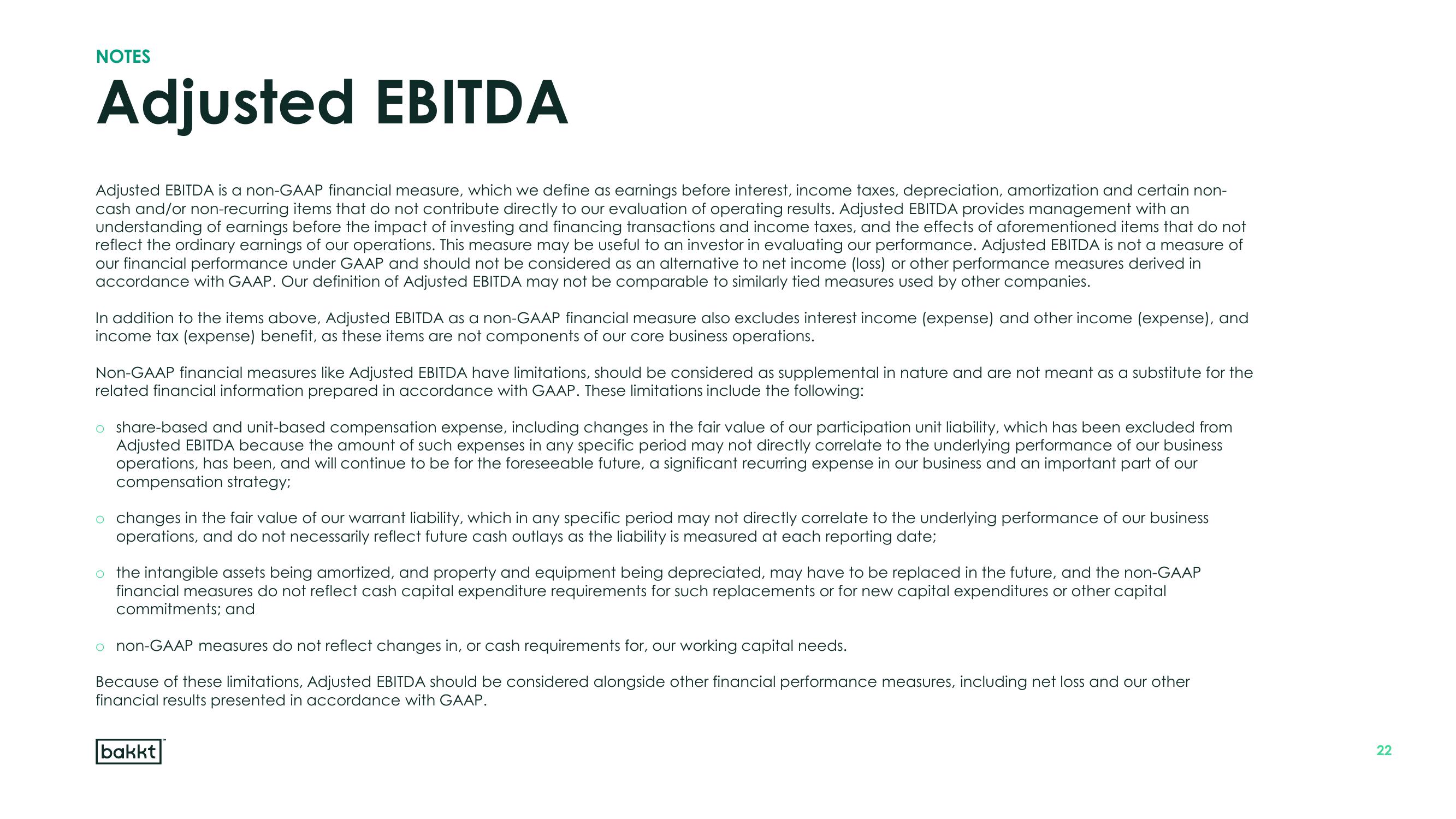Bakkt Results Presentation Deck
NOTES
Adjusted EBITDA
Adjusted EBITDA is a non-GAAP financial measure, which we define as earnings before interest, income taxes, depreciation, amortization and certain non-
cash and/or non-recurring items that do not contribute directly to our evaluation of operating results. Adjusted EBITDA provides management with an
understanding of earnings before the impact of investing and financing transactions and income taxes, and the effects of aforementioned items that do not
reflect the ordinary earnings of our operations. This measure may be useful to an investor in evaluating our performance. Adjusted EBITDA is not a measure of
our financial performance under GAAP and should not be considered as an alternative to net income (loss) or other performance measures derived in
accordance with GAAP. Our definition of Adjusted EBITDA may not be comparable to similarly tied measures used by other companies.
In addition to the items above, Adjusted EBITDA as a non-GAAP financial measure also excludes interest income (expense) and other income (expense), and
income tax (expense) benefit, as these items are not components of our core business operations.
Non-GAAP financial measures like Adjusted EBITDA have limitations, should be considered as supplemental in nature and are not meant as a substitute for the
related financial information prepared in accordance with GAAP. These limitations include the following:
o share-based and unit-based compensation expense, including changes in the fair value of our participation unit liability, which has been excluded from
Adjusted EBITDA because the amount of such expenses in any specific period may not directly correlate to the underlying performance of our business
operations, has been, and will continue to be for the foreseeable future, a significant recurring expense in our business and an important part of our
compensation strategy;
o changes in the fair value of our warrant liability, which in any specific period may not directly correlate to the underlying performance of our business
operations, and do not necessarily reflect future cash outlays as the liability is measured at each reporting date;
o the intangible assets being amortized, and property and equipment being depreciated, may have to be replaced in the future, and the non-GAAP
financial measures do not reflect cash capital expenditure requirements for such replacements or for new capital expenditures or other capital
commitments; and
o non-GAAP measures do not reflect changes in, or cash requirements for, our working capital needs.
Because of these limitations, Adjusted EBITDA should be considered alongside other financial performance measures, including net loss and our other
financial results presented in accordance with GAAP.
bakkt
22View entire presentation